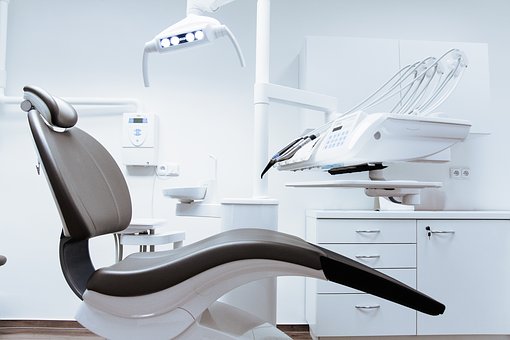Invisible braces, also known as clear aligners, have become a popular choice for orthodontic treatment due to their aesthetic appeal and convenience. However, like any orthodontic treatment, they can cause some discomfort, especially when new aligners are introduced. This article explores various strategies to manage and alleviate the discomfort associated with invisible braces Plano, ensuring a smoother and more comfortable experience throughout the treatment process.
Understanding the Source of Discomfort
Before diving into the methods to handle discomfort, it’s essential to understand why invisible braces can cause pain:
- Pressure on Teeth: Invisible braces work by applying consistent pressure on the teeth to move them into the desired position. This pressure can cause soreness, particularly when new aligners are first worn.
- Tight Fit: Each new set of aligners is slightly tighter than the previous one, designed to make incremental adjustments. This tightness can lead to discomfort until the teeth adjust.
- Edge Irritation: Although aligners are custom-made to fit the teeth, the edges can sometimes cause irritation to the gums and the inside of the cheeks.
- Adjusting to Foreign Objects: Having aligners in the mouth can feel strange initially, and it takes time for the mouth to adapt to the new sensation.
Strategies to Handle Discomfort
1. Over-the-Counter Pain Relief
For many patients, over-the-counter pain medications such as ibuprofen (Advil) or acetaminophen (Tylenol) can effectively manage the initial discomfort caused by new aligners. It’s advisable to take pain relief shortly before inserting a new set of aligners to preemptively address the pain.
2. Cold Compresses
Applying a cold compress to the outside of the mouth can help numb the area and reduce inflammation. This can be particularly helpful in the first few days after switching to a new set of aligners. Be sure to wrap the ice pack in a cloth to prevent direct contact with the skin, which can cause ice burns.
3. Use Orthodontic Wax
Orthodontic wax can be applied to the edges of the aligners if they cause irritation to the gums or the inside of the cheeks. This wax creates a smooth barrier, reducing friction and preventing sores. It’s an inexpensive and effective way to address minor irritations.
4. Warm Salt Water Rinses
Rinsing the mouth with warm salt water can help soothe sore gums and reduce irritation. The salt has natural antiseptic properties that can aid in healing any minor abrasions caused by the aligners. Simply dissolve a teaspoon of salt in a cup of warm water and rinse for 30 seconds.
5. Soft Foods Diet
Switching to a diet of soft foods can minimize additional pressure on the teeth and gums during the initial adjustment period with new aligners. Foods like yogurt, mashed potatoes, smoothies, and soups are easier to chew and less likely to exacerbate soreness.
6. Proper Oral Hygiene
Maintaining excellent oral hygiene is crucial. Brush and floss regularly to prevent any additional discomfort caused by plaque buildup or food particles trapped between teeth and aligners. Clean aligners thoroughly before reinserting them to ensure no debris causes irritation.
7. Gradual Introduction of New Aligners
When it’s time to switch to a new set of aligners, consider wearing them for a few hours before bedtime. This allows your teeth to start adjusting to the new aligners while you sleep, potentially reducing the amount of discomfort felt during waking hours.
8. Chewies
Orthodontic chewies are small, soft cylinders made from a plastic-like material. Biting on these chewies helps ensure that the aligners fit snugly against the teeth, which can help expedite the adjustment process and reduce discomfort more quickly.
9. Hydration
Staying well-hydrated can help maintain a healthy oral environment, which can alleviate some of the discomfort associated with dry mouth or irritation. Drinking plenty of water can also help keep aligners clean and free from food particles.
10. Communication with Your Orthodontist
If discomfort persists or becomes severe, it’s essential to communicate with your orthodontist. They can adjust your treatment plan, provide additional recommendations, or even modify the aligners if they’re causing significant issues.
Psychological Strategies to Handle Discomfort
1. Mindfulness and Relaxation Techniques
Practicing mindfulness and relaxation techniques, such as deep breathing exercises, can help manage pain perception and reduce stress associated with discomfort. Focusing on the positive outcomes of the treatment can also provide a mental boost.
2. Distraction
Engaging in activities that distract the mind, such as reading, watching movies, or spending time with friends and family, can help take focus away from the discomfort.
Long-Term Tips for Comfort
1. Consistent Wear
Wearing aligners for the recommended 20-22 hours per day ensures that the teeth adjust steadily, which can help prevent prolonged periods of discomfort. Removing aligners too often can extend the adjustment period and increase overall discomfort.
2. Regular Check-Ups
Attending regular check-ups with your orthodontist allows them to monitor your progress and address any issues that may be causing discomfort. Regular adjustments and professional advice are crucial for a smooth treatment process.
3. Patience and Persistence
Remember that discomfort is a part of the process and a sign that the treatment is working. Patience and persistence are key to achieving the desired results.
Conclusion
While discomfort with invisible braces is inevitable, it is typically manageable with the right strategies. Over-the-counter pain relief, cold compresses, orthodontic wax, warm salt water rinses, and a diet of soft foods can provide immediate relief. Maintaining proper oral hygiene, gradually introducing new aligners, and using tools like chewies can further alleviate discomfort. Communication with your orthodontist and psychological strategies such as mindfulness and distraction can also play significant roles in managing discomfort. With patience and persistence, the journey to a perfect smile with invisible braces can be a comfortable and rewarding experience.



